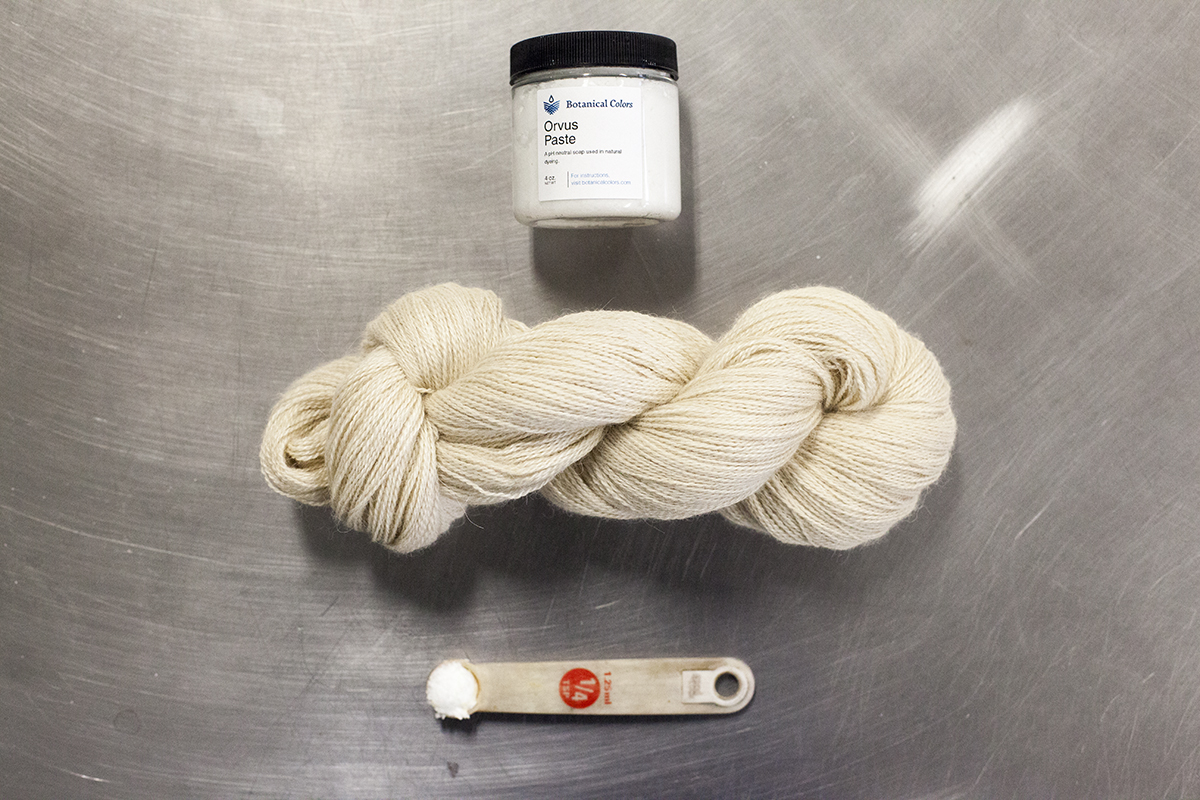
Each week, we are emailed with questions from our natural dye community asking simple and complex questions that we thought might be worth sharing. Here are a handful from this week answered by natural dyer in chief, Kathy Hattori, Founder of Botanical Colors:
I am really new to dyeing–is the material to be dyed mordanted first, then dyed? When I developed film/printed photos, you always “fixed” at the end to keep it from continuing to develop. Please help; I’m trying to understand and visualize the process. Many thanks!
The procedure that I prefer to use is: Scour or clean the fiber, then apply a mordant, then dye. When you mordant, then dye, you are setting the fibers up for optimal bonding of the fiber with the dye molecules. So, it is very different than photography where you are trying to halt a process with a fixer. In natural dyeing, you are enhancing the ability of the dye molecule to bond with the fiber through a chemical process, and it is through time and raising the temperature of the dye bath that you achieve optimal color. There are a few notable exceptions. One is when you are dyeing with indigo and want to overdye with a natural dye to produce a compound color such as green or purple. In this case, we scour, dye with indigo, mordant and then apply the dye for best results.

I grew indigo for the first time this year and it is turning really blue as it dries but I have no idea what to do next! Could you point me towards the next steps or where I can find out ?
See the answer below for how traditional Japanese sukumo is made from dried leaves. If you want to use it fresh, you can achieve a lovely robin’s egg blue by blending the fresh leaves with ice water, then immersing silk fabric or yarn in the cold water and leaf slurry. The whole thing will look like a kale smoothie and the process takes about an hour to achieve a lovely blue. This fresh process works best with silk and wool fibers and poorly with cotton and plant fibers.
I have been told the indigo leaves are very sensitive and need to be used fresh for extraction right after harvest. How do you process the dried leaves?
There are a number of different types of indigo that are grown in the U.S. Indigofera suffructicosa, is a tall, shrublike indigo plant most commonly found in the hot and humid southeast, and was the variety that was grown in the early 18th century Charleston area. A different variety, Persicaria tinctoria, also called Japanese indigo is easily grown in most temperate climates. It is popular for natural dyers grow a patch of Japanese indigo for their own use, and this is the indigo where you can blend the fresh leaves into a green slurry and product a lovely aqua blue on silk and wool. The traditional method of processing dried Persicaria leaves is through composting. The Japanese harvest the indigo plant and dry the leaves, then compost a huge batch of it – at least 300 or 400 lbs worth over 100 days of continual monitoring, watering, turning and praying – to create a composted indigo called sukumo. Sukumo is the basis of the traditional Japanese fermentation vat, which uses wood ash lye and wheat bran as its other ingredients. I have not heard of anyone successfully creating a viable sukumo with a few pounds or ounces of dried leaves.
